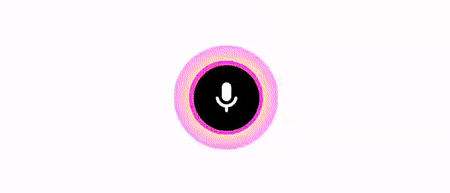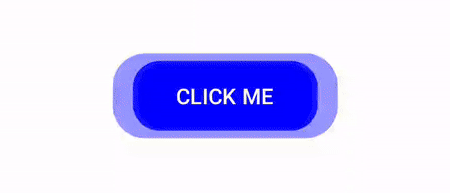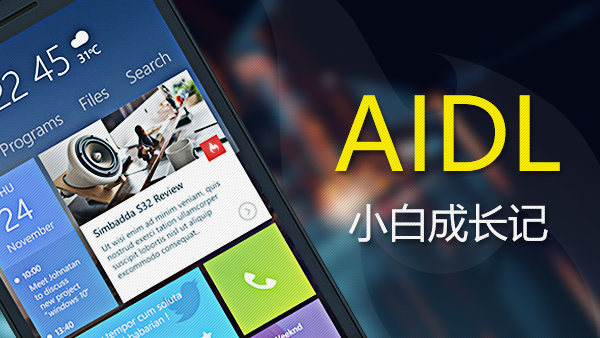欢迎光临 👋
在本文中,我们将使用 Jetpack Compose 创建一个吸引人的 脉冲特效。这绝对是个瞄准用户注意力的好办法 🎯
激动吗?🤩 就让我们开始吧 🚀👇

由 Kappdev
定义脉冲效果修改器咱们从定义一下 pulseEffect 函数开始:
@Composable
fun Modifier.pulseEffect(
targetScale: Float = 1.5f,
initialScale: Float = 1f,
brush: Brush = SolidColor(Color.Black.copy(0.32f)),
shape: Shape = CircleShape,
animationSpec: DurationBasedAnimationSpec<Float> = tween(1200)
): Modifier {
// 脉冲效果实现...
}💗 **目标尺度** 👉 指定脉冲效果将增长到的尺度
💗 **初始尺度** 👉 定义脉冲效果的初始尺度。
💗 **刷** 👉 用于填充脉冲效果的工具.
💗 **形状** 👉 心脉冲效果的形态
💗 **动画规格** 👉 用于控制效果的动画规格
在这部分,我们将一步步来看如何实现 pulseEffect 修改器函数。
首先,我们定义一个无限动画过渡:
val pulseTransition = rememberInfiniteTransition("脉冲变换")通过这个过渡效果,我们创建了两个动画。
● **缩放脉冲**➜ 动画缩放脉冲从初始大小变化到目标大小并循环执行:
val pulseScale by pulseTransition.animateFloat(
initialValue = initialScale,
targetValue = targetScale,
animationSpec = infiniteRepeatable(animationSpec),
label = "脉冲缩放"
)
由 Kappdev 发布 Kappdev
● **pulseAlpha**➜ 动画化效果的透明度(alpha),从 1f 到 0f 并不断重复地:
val pulseAlpha by pulseTransition.animateFloat(
initialValue = 1f,
targetValue = 0f,
animationSpec = 无限循环(动画规范),
label = "脉冲Alpha"
)
[Kappdev] 发布
效果图最后,我们返回这个 **this** Modifier,并使用 drawBehind 来绘制脉冲特效:
return this.drawBehind {
// 将当前对象的形状转换为 Outline
val outline = shape.createOutline(size, layoutDirection, this)
// 调整缩放
scale(pulseScale) {
// 画出形状轮廓
drawOutline(outline, color, pulseAlpha)
}
}虽然 pulseEffect 效果本身就很吸引人,但将两个脉冲效果组合成一个动画效果,会带来更吸引人的视觉效果。
让生活更轻松,代码更简洁,这里有个额外的修饰符。
@Composable // 可组合函数注解 (Annotation for composable function)
fun Modifier.doublePulseEffect( // 双脉冲效果方法 (Method for double pulse effect)
targetScale: Float = 1.5f, // 目标缩放比例,默认为1.5f (Target scale ratio, default is 1.5f)
initialScale: Float = 1f, // 初始缩放比例,默认为1f (Initial scale ratio, default is 1f)
brush: Brush = SolidColor(Color.Black.copy(0.32f)), // 刷子对象,用于绘制效果,默认为半透明的黑色 (Brush object for drawing effect, default is semi-transparent black)
shape: Shape = CircleShape, // 形状,默认为圆形 (Shape, default is a circle)
duration: Int = 1200, // 动画持续时间,默认为1200毫秒 (Animation duration, default is 1200 milliseconds)
): Modifier {
return this
.pulseEffect( // 脉冲效果 (Pulse effect)
targetScale, initialScale, brush, shape,
animationSpec = tween(duration, easing = FastOutSlowInEasing) // tween动画参数设置,快速开始缓慢结束的缓动函数 (tween animation parameter settings, Fast-out slow-in easing function)
)
.pulseEffect( // 脉冲效果 (Pulse effect)
targetScale, initialScale, brush, shape,
animationSpec = tween(
durationMillis = (duration * 0.7f).toInt(), // 第二次脉冲动画的持续时间为总持续时间的70% (Second pulse animation duration is 70% of total duration)
delayMillis = (duration * 0.3f).toInt(), // 延迟为总持续时间的30% (Delay is 30% of total duration)
easing = LinearEasing // 线性缓动函数 (Linear easing function)
)
)
}恭喜!我们成功建好了它 🥳👏。您可以在 GitHub Gist 上找到完整代码(包括额外的 Color 方法) 🧑💻。让我们来看一个实际的例子吧 👇
在这个部分,咱们将考虑它如何使用这三个简单的例子。
默认使用方法📢 此效果在应用于如按钮之类的交互组件时可能会显得意外。
🕵 问题的原因是这些组件使用了
_minimumInteractiveComponentSize_修饰符,导致如果按钮的大小小于_48.dp_,效果仍会被绘制为_48.dp_,造成大小不匹配。💡 解决方案是通过应用自定义大小修饰符来调整组件的大小。
FilledIconButton(
onClick = { /*待办事项*/ },
colors = IconButtonDefaults.filledIconButtonColors(
containerColor = Color.Black,
contentColor = Color.White
),
modifier = Modifier.doublePulseEffect().size(42.dp)
) {
Icon(Icons.Rounded.Mic, null)
}
填充图标按钮(
onClick = { /*待办事项*/ },
颜色 = IconButtonDefaults.填充图标按钮颜色(
容器颜色 = 颜色黑色,
内容颜色 = 颜色白色
),
修改器 = Modifier
.双脉冲效果(
目标缩放 = 2f,
刷 = 刷径向渐变(
0.6f to 颜色黄色,
1f to 颜色洋红,
)
)
.大小(42.dp)
) {
图标(Icons.Rounded.Mic, null)
}
按钮(
onClick = { /*TODO*/ },
shape = RoundedCornerShape(16.dp),
colors = ButtonDefaults.buttonColors (
containerColor = Color.Blue,
contentColor = Color.White
),
modifier = Modifier
.doublePulseEffect (
brush = SolidColor(Color.Blue),
shape = RoundedCornerShape(16.dp)
)
.height(42.dp)
) {
点击我
}
如果你想(可选地)显示这种效果,可以使用状态变量和 then 修饰符结合来实现。
var showPulse by remember { mutableStateOf(true) }
Button(
// 其他参数
onClick = { showPulse = !showPulse },
modifier = Modifier.then(
if (showPulse) Modifier.双脉冲效果() else Modifier
)
) { // 内容 }

Kappdev (Kappdev 是一个用户名)
自定义加载组件 | Jetpack Compose7个故事哦



感谢你读了这篇文章! ❤️ 如果你觉得它既有趣又有用,可以为它鼓掌👏来表达你的喜爱,并关注Kappdev以获取更多有趣的文章 😊

 随时随地看视频
随时随地看视频




